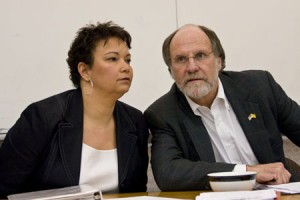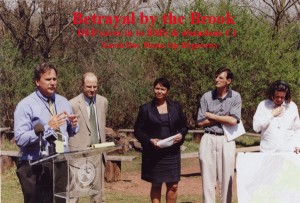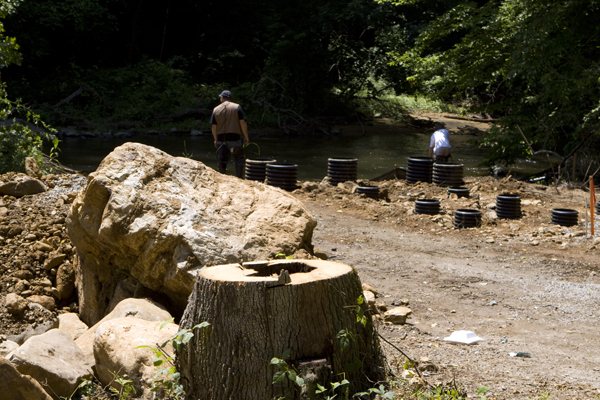 At a Trenton State House news conference today, Independent Chris Daggett released his ethics reform agenda.
At a Trenton State House news conference today, Independent Chris Daggett released his ethics reform agenda.
As I reported previously, Chris Daggett served as Chairman of the DEP “Permit Efficiency Review Task Force” – (read the Daggett’s Report to DEP here) (see a summary of troubling Task Force Report findings and recommendations below).
Daggett was appointed to that position by the Administrative Order issued by then DEP Commissioner Lisa Jackson.
Daggett’s DEP Task Force had ethical problems from the outset. Several of its members represented clients that had ongoing regulatory issues or projects seeking approvals before the DEP, including Daggett himself.
This, at best, created the appearance of a conflict of interest, or actual conflicts.
State ethics laws prohibit creation of even an appearance of impropriety, as well as an actual conflict of interest:
(a) In our representative form of government, it is essential that the conduct of public officials and employees shall hold the respect and confidence of the people. Public officials must, therefore, avoid conduct which is in violation of their public trust or which creates a justifiable impression among the public that such trust is being violated (NJSA 52:13D-12)
(3) No State officer or employee or special State officer or employee should use or attempt to use his official position to secure unwarranted privileges or advantages for himself or others.
(7) No State officer or employee or special State officer or employee should knowingly act in any way that might reasonably be expected to create an impression or suspicion among the public having knowledge of his acts that he may be engaged in conduct violative of his trust as a State officer or employee or special State officer or employee
To remedy these problems, DEP Commisisoner Jackson was asked to make the Task Force deliberations tranparent and to restrict conflicts of interest – both she and Daggett failed to do so –
see:
NEW JERSEY TO CONSULT INDUSTRY ON ECO-REWRITES IN SECRET – “Efficiency” Task Force Members Not Barred from Self-Dealing with DEP
Trenton:
An industry-dominated task force to recommend an overhaul of state anti-pollution permits and policies will work in secret, according to an e-mail from the Department of Environmental Protection (DEP) Commissioner Lisa Jackson to Public Employees for Environmental Responsibility (PEER). Commissioner Jackson also rebuffed PEER recommendations that materials submitted to the task force are made a public record and that task force members be barred from lobbying DEP for their clients.
On March 25, 2008, New Jersey PEER Director Bill Wolfe wrote Jackson asking that task force sessions be open to the public, materials submitted to the task force be made publicly available and that task force members “be precluded from having any contracts, pending regulatory approvals, or financial relationships with the Department” during the 120-day life of the task force.
In a return e-mail on the evening of April 2, 2008, Commissioner Jackson denied all of PEER’s requests. Jackson stated:
“Public input can only occur once the Task Force has completed its analysis and compiled the group’s thoughts and recommendations. At that time, I will determine how to most effectively seek and obtain input from the public”; and
“I do not consider it necessary or reasonable to restrict members of the Task Force or their respective employers from having other business before the Department.
See this link for supporting documents, including the Jackson email reply to PEER request.
BTW, a very reliable source has told me that Chris Daggett owned contaminated property and has huge economic stakes in DEP brownfields, permitting, and toxic site cleanup issues he presided over and made recommendations on as Task Force Chair. I was also told, but have not confirmed, that Daggettt owned the parcel of contaminated Jersey City land that was specifically the land mentioned in the criminal complaint of Assemblyman Harvey. Harvey was bribed to pressure DEP to issue approval of cleanup plants to allow construction of a day care center and public housing on highly toxic chromium waste site in Jersey City.
Summary if Task Force Report
Independent Chris Dagett was just endorsed for Governor by the New Jersey Chapter of the Sierra Club. So, in an effort to educate voters, we thought we’d look at his most recent environmental accomplishment as Chairman of the DEP “Permit Efficiency Review Task Force” established by former DEP Commissioner Lisa Jackson. Readers can find all the relevant original documents at these links
1. Public Announcement by DEP Commissioner Jackson [link]
2. Task Force Final Report [link]
3. DEP Implementation plan [link]
Report Lowlights:
1. On “doing less with less”
“In this time of fiscal crisis, the challenge, before the DEP is to develop different approaches to managing, to consider doing less with less, recognizing that this must be done without compromising environmental protection or public health.”
2. On Privatization
In an output/performance-driven system, the DEP would focus on the efficient execution of inherently governmental functions and explore using outside assistance, advanced IT tools or both, to complete the straightforward tasks that are not necessary to be done by government. To accomplish this, a major change must occur in the way that scope and responsibility are allocated within the DEP. In short, if the DEP is ever going to reach a high level of efficiency and effectiveness, the goal for the DEP should be to determine which environmental services are essential and which can be eliminated; which can be consolidated and which cannot; which must be provided by government and which can be delivered by outside vendors or through advanced IT tools, or both.
3. On rewriting history to mask the real agenda of the Task Force –
The original composition of Task Force was established in Jackson’s Adminsitraive Order.
Later, the composition was expanded to include environmental, community and public interest representatives, but only AFTER strong public criticism of its failure to represent public interests (glad to provide that criticism to document the chronology):
The members of the Task Force included representatives of residential and commercial developers, environmental organizations, land use planning firms, nongovernment organizations, housing advocacy groups, business and industry, the environmental justice community, counties, municipalities, public utilities authorities, engineering firms, the EPA, the Governor’s office and environmental consulting firms. Three were former cabinet members: DEP, Transportation and Community Affairs. Exhibit 2 is a list of the members of the Task Force and their affiliations.
4. On ignoring the only pro-environment objectives, exposing them as green cover (notice the use of “shall and “may” and the limit in scope to “incentives” (aka subsidies) as opposed to “regulations” which apparently are taboo)):
b. The report of the Task Force shall also provide recommendations for operational, policy and regulatory changes at the department to provide incentives for and to advance sustainable development projects that contribute to achieving statewide greenhouse gas limits, economic growth opportunities in urban areas and meaningful affordable housing and that, as a result of their location and design, have little or no impact on public health and safety, the environment or natural resources; and
c. As part of its deliberations, the Task Force may also identify possible statutory changes that would result in enhancing the DEP’s timely and efficient service or the DEP’s ability to provide incentives for sustainable development projects that contribute to achieving statewide greenhouse gas limits, economic growth opportunities in urban areas and meaningful affordable housing and that, as a result of their location and design, have little or no impact on public health and safety, the environment or natural resources.”
Where are these pro-environment recommendations in the Report? Not there.
5. On the use of Orwellian euphemism to mask a pro-business anti-environmental agenda:
In short, the Commissioner formed the Task Force out of a concern that the current permitting process cannot keep up with demand. The Commissioner asked the Task Force to help her in making the permit process more timely, predictable, consistent and transparent to the regulated community [but not to the public?] and to do so at the lowest possible cost to taxpayers while enhancing New Jersey’s environment.”
6. On confirming the fact that DEP rubber stamps most permits – only the really bad projects need “streamlining”
Overall, 90 percent to 95 percent are approved, often with substantial changes as a result of DEP input, with the remainder being denied or withdrawn. The permit decisions are usually made within the statutory timeframe, which varies from program to program. The permitting system breaks down most frequently when there are multiple permits for a single project, when projects are large in size and when impacts to the environment are complex and potentially extensive.
7. On how the Big Boys in the Private sector know best – Task Force say DEP should emulate the large polluters who off-shored jobs and deindustrialized the US manufacturing base:
Overall, there is no single silver bullet that can fix the various permitting problems of the DEP. Rather, what is needed is similar to the approach that enables certain manufacturing companies to stand out in their fields. The success of these companies is rooted in rigorous and unrelenting attention to all of the little details of the manufacturing process, or in the DEP’s case, the permitting process. The successful manufacturing companies have created a work culture with a bias toward action“ a performance-driven environment “ and have empowered its employees to perform.
8. On providing a rationale Commissioner Jackson relied on to privatize DEP science (i.e. Science Advisory Board) and abolish the Division of Science and Research – the “study group” was never formed, nor was the mistaken recommendation to “restore the stature of the Office” implemented (BTW, Science and Research was a Division at the time of this Report, a revealing error. The Division was downsized to an Office):
“In the course of Task Force deliberations, two issues arose which were outside the charge of the Administrative Order but which directly impact the efficiency of the DEP. The first is the quality of science and research that provides the underpinning of the policies, guidance, directives and regulations of the DEP. Through the first two decades of the DEP’s history, the Office of Science and Research was one of the most highly regarded programs in the country. However, during the past two decades, budget cuts and reorganizations have undercut the quality of the program. While the Office still does excellent work, the staff simply cannot keep up with the breadth and scope of DEP needs. Accordingly, the TaskForce recommends that the DEP convene a study group that examines this issue and addresses possible ways to restore the stature of the Office, with a particular focus on collaborative efforts with academic research institutions and outstanding practitioners to minimize or avoid significant budget and staff increases.”


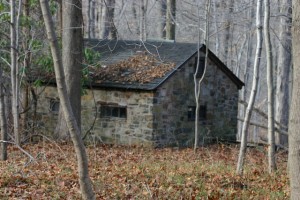
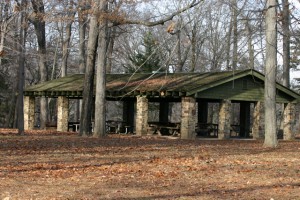
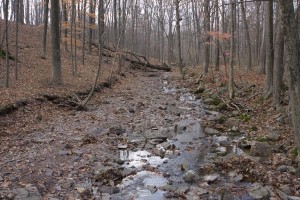
 At a Trenton State House news conference today, Independent
At a Trenton State House news conference today, Independent 
